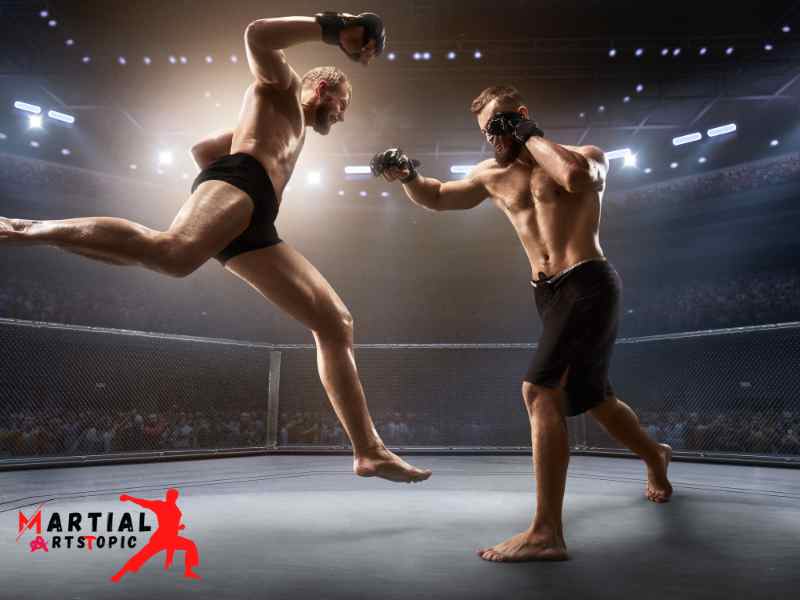
MMA vs Boxing – Which Better?
MMA vs Boxing – Which is Better?When it comes to combat sports, two of the most popular disciplines that often get compared are MMA (Mixed Martial Arts) and boxing. Both sports have passionate fan bases and have been around for decades, producing some of the greatest athletes and iconic moments in sports history. But the question remains, which is better – MMA or boxing? Let’s delve into the world of combat sports and explore the key differences and similarities between these two disciplines.
Firstly, let’s talk about the rules and fighting styles in MMA and boxing. Boxing, as the name suggests, focuses solely on punches, with fighters using their fists to strike their opponents. On the other hand, MMA combines various martial arts disciplines, including striking (punching and kicking), grappling (wrestling and submissions), and ground fighting. This diversity in fighting styles is what sets MMA apart from boxing, allowing fighters to showcase their skills in a broader range of techniques and strategies.
In terms of popularity, both sports have their own dedicated fan bases. Boxing has a long-standing history and has produced legendary fighters like Muhammad Ali, Mike Tyson, and Floyd Mayweather Jr. On the other hand, MMA has gained immense popularity in recent years, thanks to organizations like the UFC (Ultimate Fighting Championship) and fighters like Conor McGregor and Ronda Rousey. The rise of MMA can be attributed to its fast-paced, action-packed nature, combined with the raw athleticism and versatility of its fighters.

When it comes to the physical demands and training required, both MMA and boxing athletes go through rigorous and intense training regimens. However, MMA fighters need to be proficient in multiple disciplines, requiring them to train in various martial arts styles, strength and conditioning, and grappling techniques. This level of versatility demands a high degree of athleticism and adaptability from MMA fighters. On the other hand, boxing primarily focuses on punches and footwork, requiring fighters to develop exceptional hand-eye coordination, speed, and endurance.
Another aspect to consider is the level of excitement and entertainment value in both sports. We know MMA fights for their unpredictability and dynamic nature, with a wide range of techniques and strategies being employed. From knockout punches and devastating kicks to ground submissions and dramatic comebacks, MMA fights often offer a thrilling, edge-of-your-seat experience. Boxing, on the other hand, emphasizes the sweet science of the sport, with fighters showcasing their boxing skills, defensive techniques, and strategic game plans. The technical mastery and precision displayed in boxing matches can be appreciated by fans who enjoy the artistry of the sport.
Ultimately, the question of which is better – MMA or boxing – comes down to personal preference. Some fans enjoy the all-encompassing nature of MMA, with its mix of striking, grappling, and ground fighting, while others appreciate the pure skill and technique showcased in the boxing ring. Both sports have their own unique appeal, and the choice between the two ultimately depends on what aspects of combat sports resonate with you.
What is MMA?
MMA, short for Mixed Martial Arts, is a highly dynamic and intense combat sport that combines various disciplines, including boxing, wrestling, Muay Thai, Brazilian Jiu-Jitsu, and more. MMA fighters use a combination of striking and grappling techniques to compete in a controlled environment. With its growing popularity, MMA has become a global phenomenon, captivating audiences with its electrifying fights and showcasing the skills and athleticism of its participants. Whether you’re a fan of the sport or aspiring to become an MMA fighter, understanding the multifaceted nature of MMA is key to appreciating its excitement and intricacies.
What is Boxing ?
Boxing, also known as the “sweet science,” is a combat sport that involves two opponents engaging in a competition of strength, speed, and strategy. It is a highly physical sport that requires athletes to wear protective gloves and follow a set of rules. Boxing has been practiced for centuries and has gained immense popularity worldwide. This thrilling sport requires athletes to utilize techniques such as jabs, hooks, and uppercuts to strike their opponents while avoiding being hit by themselves. Boxing is not only a challenging physical activity but also an incredible mental exercise, as it requires fighters to strategize and think quickly on their feet. With its intense nature and electrifying atmosphere, boxing has become a global phenomenon, captivating both athletes and fans alike.
Inside the Ring: Training Methods in MMA and Boxing
Inside the Ring: Training Methods in MMA and Boxing When it comes to combat sports, two disciplines stand out among the rest – MMA (Mixed Martial Arts) and boxing. While both sports require immense skill and dedication, they differ in their training methods and techniques.
MMA Training Methods: A Mix of Everything
MMA is a combination of various martial arts, including Brazilian Jiu-Jitsu, Muay Thai, wrestling, and boxing. As a result, MMA training incorporates a wide range of techniques and requires a diverse set of skills.
- Striking: MMA fighters train extensively in various striking arts, such as Muay Thai and boxing. This involves perfecting punches, kicks, elbows, and knees to develop powerful striking abilities.
- Grappling: Unlike boxing, MMA fighters focus on grappling techniques, such as takedowns, submissions, and ground control. Brazilian Jiu-Jitsu plays a crucial role in MMA training, as fighters learn to maneuver and submit opponents on the ground.
- Strength and Conditioning: MMA fighters need to be well-rounded athletes, possessing both strength and endurance. Training sessions often include weightlifting, cardio exercises, and circuit training to enhance overall fitness.
- Sparring: To simulate real fight scenarios, MMA fighters engage in sparring sessions. These sessions allow them to test their techniques, timing, and reflexes against training partners, preparing them for actual bouts.
Boxing Training Methods: Mastering the Sweet Science
Boxing, on the other hand, focuses solely on punches and footwork, making it a more specialized discipline. Here are some key training methods used in boxing:
- Shadow Boxing: Boxers spend a significant amount of time practicing their technique and form through shadow boxing. This allows them to work on their footwork, head movement, and combination punches.
- Bag Work: Heavy bags, speed bags, and double-end bags are essential tools for boxers. Bag work helps improve punching accuracy, power, and speed, as well as developing hand-eye coordination.
- Pad Work: Boxers work with trainers or partners who hold focus mitts for them to hit. This training method enhances precision, timing, and defensive skills.
- Skipping Rope: A boxing staple, skipping rope improves footwork, coordination, and cardiovascular endurance. Boxers often incorporate this exercise into their warm-up routine.
MMA vs Boxing: The Great Debate
The debate between MMA and boxing has been ongoing for years. Some argue that MMA is a more practical and realistic combat sport, as it combines various techniques from different martial arts. Others believe that boxing is a purer form of combat, focusing solely on striking and footwork.
Ultimately, both sports have their merits and attract a wide range of athletes and fans. Whether you prefer the versatility of MMA or the precision of boxing, it’s undeniable that both disciplines require intense training and dedication.
The Similarities and Differences Between MMA and Boxing

MMA vs Boxing: Exploring the Similarities and Differences Combat sports have always captivated audiences, fueling intense debates about which discipline reigns supreme. Two of the most prominent combat sports that often find themselves at the center of these discussions are MMA (Mixed Martial Arts) and boxing. While both sports involve fighters stepping into the ring, there are distinct differences that set them apart.
Similarities between MMA and Boxing
- Striking Techniques: Both MMA and boxing involve striking techniques. In boxing, fighters primarily use punches to score points and knockout their opponents. Similarly, MMA fighters also employ punches, though they have a wider range of striking techniques at their disposal, including kicks, elbows, and knees.
- Training Regimens: Both MMA and boxing require rigorous training regimens to excel in the ring. Fighters from both disciplines spend countless hours honing their striking, footwork, conditioning, and defensive skills. Training camps are designed to push fighters to their limits, ensuring they are in peak physical condition for their matches.
- Mental Toughness: MMA and boxing demand mental toughness from their athletes. Fighters must possess the ability to withstand punishment, maintain focus, and make split-second decisions under immense pressure. Both sports require mental fortitude, resilience, and a competitive spirit.
Differences between MMA and Boxing
- Fighting Styles: The most significant difference between MMA and boxing lies in the fighting styles. In boxing, they restricted fighters to using only their fists to strike their opponents. MMA, on the other hand, allows fighters to utilize various martial arts disciplines, including Brazilian Jiu-Jitsu, wrestling, Muay Thai, and more. This diversity of techniques creates a more dynamic and unpredictable fighting style in MMA.
- Ring vs. Octagon: Another noticeable difference is the fighting arena. Boxing matches take place in a traditional ring, whereas MMA fights occur within an octagonal cage known as the Octagon. The cage in MMA adds an extra layer of complexity, as fighters must navigate and utilize the cage walls strategically.
- Scoring System: The scoring systems in MMA and boxing differ significantly. Boxing uses a 10-point must system, where judges assign points to each fighter based on their performance in each round. MMA, on the other hand, follows a broader scoring system that takes into account striking, grappling, aggression, and octagon control.
- Fight Duration: MMA fights have shorter durations compared to boxing matches. Boxing matches often consist of 10 to 12 rounds, with each round lasting 3 minutes. In contrast, MMA fights typically consist of three 5-minute rounds, or five 5-minute rounds for championship fights.
Pros and Cons of MMA and Boxing

MMA vs Boxing: Pros and Cons of Two Combat Sports When it comes to combat sports, two popular disciplines often dominate the conversation – MMA (Mixed Martial Arts) and Boxing. Both sports showcase the incredible skills and athleticism of their respective athletes, but they also have their own unique set of pros and cons.
MMA, also known as cage fighting, is a dynamic combat sport that combines various martial arts disciplines, including boxing, kickboxing, wrestling, Brazilian Jiu-Jitsu, and more. On the other hand, boxing focuses solely on punches, with fighters wearing gloves and aiming to outstride their opponents using precise techniques. Let’s delve deeper into the pros and cons of each sport.
Pros of MMA
- Versatility: they trained MMA fighters in multiple disciplines, making them well-rounded combatants. They have an array of strikes, takedowns, and submissions at their disposal, making fights highly unpredictable and exciting.
- Realistic self-defense: MMA training prepares individuals for real-life self-defense situations, as it incorporates various techniques from different martial arts. It equips practitioners with the skills needed to defend themselves in a wide range of scenarios.
- Thrilling action: they know MMA fights for their intense and fast-paced action. The combination of striking and grappling techniques keeps viewers engaged and on the edge of their seats throughout the entire fight.
Cons of MMA
- Higher risk of injury: because of the diverse range of techniques involved, there is an increased risk of injury in MMA compared to boxing. Joint locks, submissions, and ground-based fighting can potentially lead to more severe injuries.
- Steep learning curve: Learning multiple martial arts disciplines can be challenging and time-consuming. It requires dedication, discipline, and a significant investment of time and effort to become proficient in all aspects of MMA.
- Complex scoring system: MMA scoring can be subjective and sometimes difficult to understand for both fighters and fans. The judges’ interpretations of the action can vary, leading to controversial decisions.
Pros of Boxing
- Focus on striking: Boxing is the ultimate sport for refining and mastering punching techniques. It emphasizes footwork, head movement, and precise punches, making it a beautiful and technical martial art.
- Reduced risk of certain injuries: While boxing does carry the risk of concussions and head trauma, the absence of kicks, knees, and elbows reduces the risk of other types of injuries commonly seen in MMA.
- Legendary history: Boxing has a rich history and tradition, with countless iconic moments and legendary fighters. Fans of the sport appreciate its long-established culture and the legacy left by past supports.
Cons of Boxing
- Limited skill set: Boxers focus solely on punching techniques, which means they have a narrower range of tools compared to MMA fighters. This limitation can make fights somewhat predictable and less dynamic.
- Longer fights: Boxing matches typically consist of more rounds and longer durations than MMA fights. This can sometimes result in less action-packed rounds and slower pacing, which may be less appealing to viewers seeking a more fast-paced experience.
- Lack of ground-based skills: Boxing does not incorporate ground fighting or submissions, limiting the range of techniques and strategies available to the fighters.
A Clash of Styles: Unraveling the Strategies in MMA and Boxing
In the world of combat sports, two disciplines have reigned supreme for generations: MMA (Mixed Martial Arts) and boxing. These sports have captivated audiences worldwide with their unique styles and strategies. MMA and boxing may share some similarities, but they are distinct in terms of technique, rules, and overall approach.
Understanding the Differences
While both MMA and boxing involve punches, kicks, and defensive maneuvers, the rules and strategies vary significantly. Boxing is a sport solely focused on punches, where fighters aim to land strikes on their opponent while avoiding getting hit themselves. MMA, on the other hand, encompasses a broader range of techniques, including striking, grappling, and submissions.
Strategies in Boxing
In the world of boxing, precision, footwork, and defensive skills are paramount. Boxers rely on their ability to weave in and out of range, slipping punches with expert head movement, and counter-punching with lightning speed. Footwork plays a crucial role, as boxers strive to maintain optimal angles for offensive and defensive purposes. The objective in boxing is to outpoint or knock out the opponent through a combination of skillful jabbing, hooking, and uppercutting.
Strategies in MMA
They often referred MMA to as the ultimate test of hand-to-hand combat. It blends various martial arts disciplines into a seamless fighting style. MMA fighters utilize a combination of striking, wrestling, and submission techniques to gain the upper hand in a bout. While striking is an integral part of MMA, fighters also focus on takedowns, clinching, and ground control. The goal is to either win by knockout or submission or secure a dominant position to earn points from judges.
The Clash of Styles

When it comes to the clash of styles between MMA and boxing, there are a few key factors to consider. Firstly, the stance and movement in each discipline differ significantly. Boxers typically adopt a squared-off stance, emphasizing stability and optimal punching angles. MMA fighters, on the other hand, often utilize a more bladed stance, allowing for greater mobility and versatility in their attacks.
Furthermore, the range of attacks varies greatly between MMA and boxing. Boxers primarily focus on punches, utilizing combinations and varying their speed and power to deceive their opponents. MMA fighters, with their arsenal of strikes, kicks, knees, and elbows, have a wider range of options to keep their adversaries guessing. The ability to transition seamlessly between striking and grappling is a unique aspect of MMA that often catches boxers off guard.
We cannot underestimate the psychological aspect of the clash of styles. While boxers may be accustomed to the rhythm and pacing of a traditional boxing match, MMA fighters bring an element of unpredictability that can unsettle even the most composed boxer. The constant threat of takedowns and submission attempts forces boxers to adapt their strategies and guard against a wider array of attacks.
Whether you’re a fan of striking dominance or appreciate the multifaceted nature of MMA, there’s no denying the excitement that arises when these two worlds collide. The clash of styles in combat sports serves as a reminder of the ever-develop nature of competitive fighting and the endless possibilities it presents.
Injury Risk and Safety: MMA vs Boxing
Combat sports have always captured our attention with their raw intensity and skillful displays. Among the most popular combat sports, mixed martial arts (MMA) and boxing stand out as fierce and captivating disciplines. However, with their high impact and physical demands, concerns about injury risk and safety are paramount.
Understanding the Injury Risk in MMA
Mixed Martial Arts, with its diverse range of techniques from striking to grappling, presents a unique injury landscape. They distributed the risk of injury in MMA among various body regions due to the nature of the sport. Fighters are exposed to the potential for head trauma, broken bones, joint injuries, cuts, and bruises. While head injuries are a primary concern in MMA, the implementation of safety protocols, such as mandatory protective gear and medical checks, have significantly reduced the risk of severe injuries.
Examining the Injury Risk in Boxing
Boxing, known for its punches and defensive maneuvers, carries its own set of injury risks. The primary focus in boxing is on head trauma, particularly concussions. The repeated blows to the head can result in long-term brain injuries, such as chronic traumatic encephalopathy (CTE). However, boxing regulations have developed over time, introducing safety measures like mandatory headgear, medical examinations, and concussion protocols to ensure fighter safety.
Comparing the Safety Measures
When it comes to injury prevention, both MMA and boxing have made strides in improving safety measures. While boxing has a longer history and more established safety protocols, MMA has quickly adapted and implemented similar measures to protect its athletes. Both sports now require licensed medical professionals at ringside, pre-fight medical examinations, and post-fight medical suspensions.
Factors Influencing Injury Risk
Several factors contribute to the injury risk disparity between MMA and boxing. The inclusion of ground fighting in MMA increases the likelihood of joint injuries, while boxing’s focus on head trauma poses a unique threat. The duration of rounds and number of rounds also differ, with boxing typically having longer bouts. These differences impact fatigue levels, which can indirectly affect injury risk.
Training and Conditioning
The level of training and conditioning required for both MMA and boxing cannot be understated. Athletes in both sports undergo rigorous training regimes to prepare their bodies for the physical demands of combat. Proper technique, strength training, flexibility exercises, and injury prevention programs are essential components in reducing the overall injury risk in both MMA and boxing.
The Future of Combat Sports: Will MMA Surpass Boxing?
Combat sports have always captivated audiences, providing thrilling displays of athleticism, skill, and raw power. Traditionally, boxing has reigned supreme as the ultimate form of hand-to-hand combat. However, the rise of Mixed Martial Arts (MMA) has challenged boxing’s dominance, igniting a debate about the future of combat sports.
The Evolution of MMA vs. Boxing
Over the years, MMA has emerged as a dynamic and multidimensional combat sport that encompasses various disciplines, including striking (boxing, kickboxing), grappling (judo, Brazilian Jiu-Jitsu), and submission holds. This amalgamation of fighting styles has allowed MMA fighters to showcase their versatility and adaptability, giving rise to intense and unpredictable bouts.
On the other hand, boxing has a long-established history, focusing primarily on punches and footwork. With its technicality and emphasis on strategy, boxing has produced legendary supports and iconic moments throughout its existence.
The Rising Popularity of MMA

In recent years, MMA has witnessed a meteoric rise in popularity, attracting a younger demographic and expanding its global reach. One of the key factors contributing to this growth is the Ultimate Fighting Championship (UFC), which has become the premier MMA organization, hosting high-profile events that capture the attention of fans worldwide.
MMA’s appeal lies in its fast-paced action, the inclusion of multiple fighting styles, and the raw excitement generated by the possibility of knockouts, submissions, and dramatic comebacks. This combination has resonated with audiences, resulting in increased viewership and commercial success.
Boxing’s Timeless Legacy
Despite the surge in MMA’s popularity, boxing remains deeply rooted in the fabric of combat sports. With a rich history dating back centuries, boxing has produced legendary fighters such as Muhammad Ali, Mike Tyson, and Floyd Mayweather Jr. These icons have elevated the sport’s status and captured the imagination of fans across generations.
Boxing’s simplicity, technical brilliance, and larger-than-life personalities have made it a staple of sports culture. The allure of a heavyweight championship fight or a showdown between two boxing legends still holds a unique magnetism, captivating fans worldwide.
The Crossover Effect
In recent times, we have witnessed a fascinating crossover between MMA and boxing. This trend has seen prominent MMA fighters, such as Conor McGregor and Anderson Silva, venture into the boxing ring to challenge established boxers. These crossovers events have generated immense buzz and intrigue, bringing together fans from both sports and proving that the lines between MMA and boxing are becoming increasingly blurred.
The Impact of Entertainment and Media
In the age of digital media and streaming platforms, accessibility is a vital factor in determining the future of combat sports. MMA has embraced this shift, with the UFC capitalizing on social media, online streaming, and partnerships with major broadcasters to expand its reach and engage with fans on a global scale.
While boxing has made efforts to adapt to the changing media landscape, it still relies heavily on traditional pay-per-view models and network television deals. To truly compete with MMA’s accessibility, boxing needs to embrace digital platforms and find innovative ways to engage with its audience.
As we look to the future of combat sports, it is evident that MMA’s rapid growth and appeal have posed a formidable challenge to boxing’s long-standing dominance. MMA’s inclusion of multiple fighting styles, rising popularity, and crossover events have propelled it into the spotlight, captivating a new generation of fans.
However, boxing’s timeless legacy, technical brilliance, and the allure of high-profile matchups continue to maintain its relevance and draw. The future of combat sports may not be an either-or scenario, but a symbiotic relationship where both MMA and boxing coexist, complementing each other’s strengths to provide fans with a diverse and electrifying combat sports landscape.
Choosing Sides: MMA vs Boxing – Which Sport is Right for You?

Choosing Sides: MMA vs Boxing – Which Sport is Right for You?When it comes to combat sports, two names that often come to mind are MMA (Mixed Martial Arts) and boxing. Both sports have gained immense popularity over the years, captivating audiences with their intense action and skillful displays. If you find yourself torn between the two, wondering which sport is right for you.
MMA and boxing may share some similarities, but they are distinct sports with their own unique characteristics. Let’s delve deeper into the world of MMA and boxing, exploring their differences, benefits, and what might suit you best.
MMA – A Test of Versatility
Mixed Martial Arts, as the name suggests, combines various forms of martial arts, including striking, grappling, and ground fighting. MMA fighters utilize a wide range of techniques, incorporating elements from disciplines such as boxing, Muay Thai, Brazilian Jiu-Jitsu, and wrestling.
MMA offers a diverse and holistic approach to combat sports. It demands a high level of versatility, as fighters need to be proficient in both striking and grappling. This dynamic aspect of MMA provides a thrilling and unpredictable experience for both participants and spectators.
Boxing – The Sweet Science
On the other hand, boxing focuses solely on punches, footwork, and defensive skills. They often refer it to as the “Sweet Science” due to its emphasis on technique, timing, and precision. Boxers display incredible stamina, agility, and mental toughness as they navigate the ring, relying solely on their fists.
Boxing matches are renowned for their strategic battles and explosive knockouts. The sport hones a fighter’s discipline, speed, and ability to read their opponent’s movements. With its rich history and legendary fighters, boxing has become an art form in its own right.
Physical Demands and Training
Both MMA and boxing demand rigorous physical training. However, the focus of training differs in each sport. MMA fighters require a well-rounded skill set, encompassing striking, grappling, and ground techniques. Training sessions often incorporate a mix of disciplines, allowing fighters to develop a versatile fighting style.
In contrast, boxers primarily concentrate on honing their punching technique, footwork, and defensive maneuvers. Their training focuses on building endurance, agility, and hand-eye coordination. Boxing training includes intense sparring sessions and bag work to simulate real fight scenarios.
Safety and Injury Risks
As with any contact sport, both MMA and boxing carry inherent risks. However, due to its nature and rule set, MMA has a higher risk of injury. The inclusion of grappling and ground fighting increases the chances of joint locks, submissions, and affected-related injuries.
Boxing, while still physically demanding, primarily focuses on punches to the head and body. With proper protective gear and adherence to safety protocols, the risk of severe injuries can be mitigated. However, it is crucial to note that repeated blows to the head can result in long-term health consequences.
Entertainment Value
In entertainment value, both MMA and boxing have their own charm. MMA offers a diverse range of techniques and fighting styles, keeping fans at the edge of their seats. The inclusion of ground fighting and submissions adds an extra layer of excitement and unpredictability.
Boxing, on the other hand, provides a pure and straightforward display of striking skills. The anticipation of a knockout punch and the strategic battles in the ring create a captivating viewing experience. Boxing has a rich history and is often associated with iconic fights that have become part of sporting folklore.
So, which sport is right for you – MMA or boxing? It ultimately comes down to personal preference, goals, and what aspects of combat sports appeal to you the most. If you enjoy a well-rounded approach that encompasses both striking and grappling, MMA might be the sport for you. On the other hand, if you appreciate the technical mastery of punches and footwork, boxing might be your calling.
Remember, both MMA and boxing require dedication, discipline, and a commitment to training. Whichever path you choose, always prioritize safety and proper coaching to fully enjoy the sport while minimizing the risks involved.
In conclusion
Both MMA and boxing are popular combat sports that offer unique styles and techniques. While boxing focuses primarily on punches and defensive skills, MMA incorporates a wider range of strikes, grappling, and submissions. Each sport has its own set of rules and regulations, attracting different types of athletes and fans.Both MMA and boxing have their own merits and can be enjoyed by enthusiasts of all levels. Boxing showcases the art of pure punching technique and footwork, while MMA provides a more diverse and dynamic spectacle with a variety of fighting styles on display.
Ultimately, the choice between MMA and boxing comes down to personal preference. Whether you appreciate the pure skill and precision of boxing or the all-encompassing nature of MMA, both sports offer thrilling and intense action for fans worldwide.
